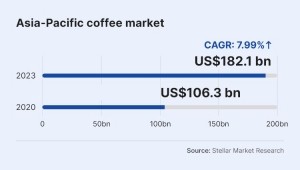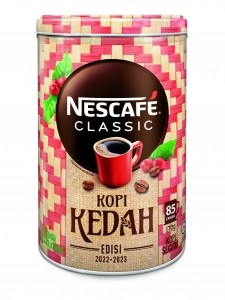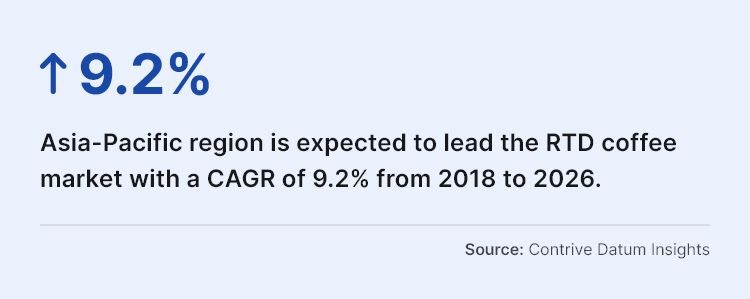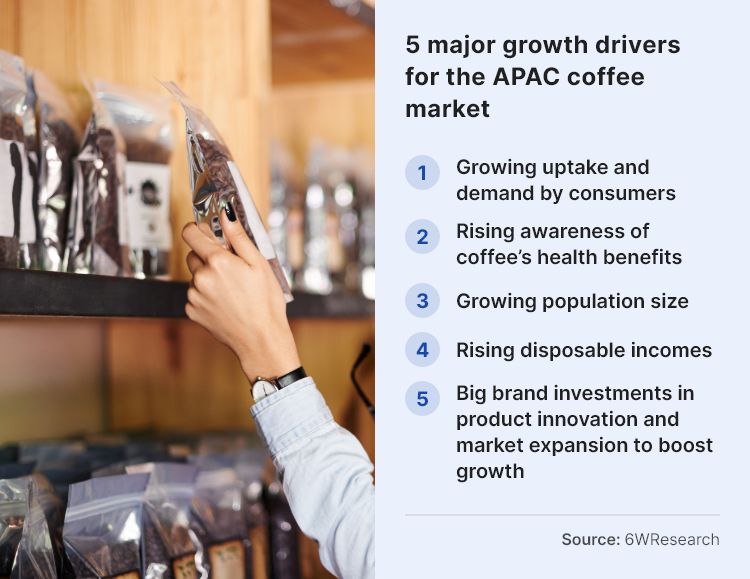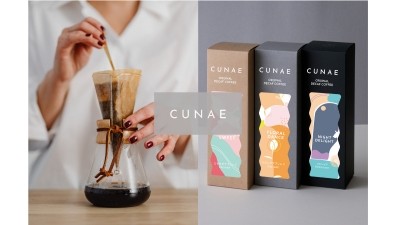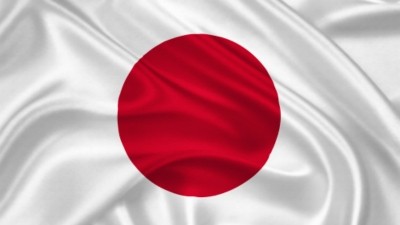FNA DEEP DIVE: COFFEE
Caffeine culture: Nestle, Suntory among coffee brands highlighting localisation and RTD innovation as key drivers
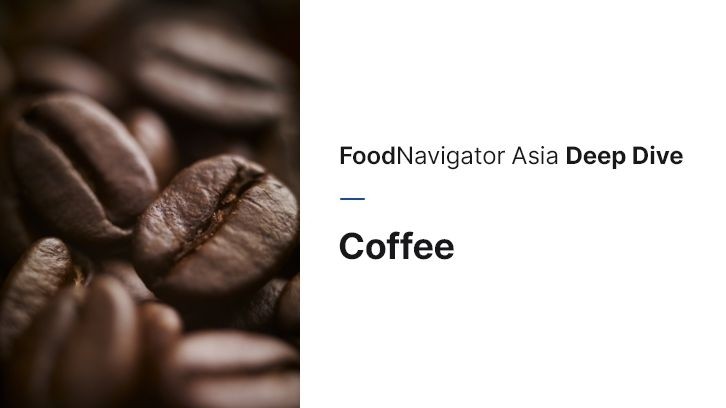
In this edition of the FNA Deep Dive, we have spoken to several of the biggest coffee brands as well as industry-leading trailblazers in the APAC region, in order take a closer look at the most significant trends driving the growth of this longstanding beverage sector.
Coffee has remained a mainstay for consumers both as a morning wake-up beverage as well as a stimulant of sorts throughout busy days and nights for many centuries, but whilst the age-old tradition of having a hot cup of coffee in the morning is still a common practice, the sector has undergone significant evolution in the trends driving its growth.
One major area of focus amongst coffee brands has been localised innovation, with household names such as Nestle having specifically developed local variants of coffee to meet local consumer needs in several of its markets under the NESCAFE brand.
“To cater to the flavour profiles of Malaysians and ensure our products resonate with local consumers, localisation is essential,”Nestle Malaysia Coffee Business Unit Business Executive Officer Raef Labaki told FoodNavigator-Asia.
“While NESCAFÉ is a global brand, the majority of our product offerings are produced locally and they are launched in the market only after consumers’ validation of concept and taste.
“[So while] Nestle already has [several well-known products] in our existing pure soluble coffee range, such as NESCAFE Classic and NESCAFE Gold which are considered household coffee beverages of choice, [this year we have also launched] a new edition of our NESCAFE Classic Kopi Kedah.
“This is Nestlé Malaysia’s very first homegrown coffee product [made] with 100% locally grown coffee beans purchased via our NESCAFÉ Grown Respectfully programme [which aims to highlight] the local coffee sector over the long-term, as Malaysia is seated within the [regional] coffee belt but produces a relatively small amount of coffee crops compared to neighbouring countries such as Indonesia and Vietnam.”
Kedah is a state in Malaysia known for various agricultural crops, especially rice, but coffee has not yet emerged as one of its better-known commodities here. ‘Kopi’ is coffee in the Malay language.
“At this juncture, this innovation is unique to Kedah – [but] it will be a great achievement in future if we are able to have different local variants available by state,” Labaki added.
Those familiar with coffee consumption culture in Asian markets might opine that local coffee is considered a more traditional variant, so this concept might be going backwards in a way, but it is precisely the fusion of traditional local coffee culture into newer coffee concepts or formats that is the hallmark of evolution for this sector.
For instance, Singapore-based coffee company Wake The Crew specialises in making cold brew coffee concentrates – a very novel concept for coffee in comparison with the traditional brewed or instant variants – but has made sure to ensure it provides offerings with a localised twist.
“One example we have created is a twist on traditional local kopi to create the Nanyang cold brew concentrate,” Wake The Crew Co-Founder Lee Ting Ong told us.
“This brings together the smoothness of cold brew with the rich flavours of traditional Singapore kopi to make a highly robust and fragrant cold brew, which local consumers are looking for.
“Other localised innovations include a cold brew Yuan Yang concentrate, where we cold brew local Singapore teh together with local Singapore kopi to create our unique Yuan Yang drink - The cold brewing process extracts the coffee and tea’s natural flavours without any of the bitterness or acidity that comes from regular hot brewing.”
Another example here comes from NO HARM DONE which specialises in the production of coffee capsules for Nespresso-compatible machines – another prime example of a more modern coffee format that seeks to reintegrate traditional local coffee culture.
“The coffee sector here in APAC is now in what we call the Fourth Wave, which is centred on bold and exciting innovations,” NO HARM DONE Founder and CEO Simon Lieberium said.
“What brands like ours are trying to do is bring the fun back into the coffee scene [with a focus on] experimenting with new flavours and presenting products in a more light-hearted manner.
“Traditional local coffees are certainly ‘new’ in terms of coffee capsules - and we see that it is resonating well with the younger generation of coffee consumers here too.”
RTD ready to soar
While the ready-to-drink concept is not exactly a new one for beverages, there is no doubt that the popularity of this format has risen alongside rising consumer demand for convenience in the past decade.
This has been particularly obvious in markets like Japan, where canned RTD coffee is exceptionally popular with consumers – unsurprising given the local vending machine culture which makes canned drinks all the more accessible.
In this market, beverage giant Suntory has been a market pioneer for many years with its BOSS brand of canned coffee, frequently associated by local consumers as a ‘coffee for the working people’.
BOSS’ longstanding heritage since it was launched back in 1992 has seen it develop some 300 varieties of different RTD coffee products which continue to see widespread demand today.
“Our RTD coffee covers many options from black and unsweetened to varying levels of milk and sugar [to cater to all] Japanese consumers,” a spokesman for Suntory told us.
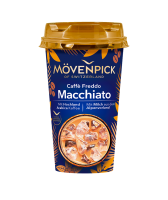
“Our core products are the 190g cans, such as ‘Black’ and ‘Luxury Fine Sugar’ [and we have been seeing our] Craft BOSS series in 500ml PET bottles grow significantly in sales volume too.”
In line with recent health trends, one of BOSS’ current most popular RTD coffee products is Luxury Fine Sugar, best known for a low sugar content with an easy-to-drink taste.
“Boss RTD coffee is not only a household name in Japan, but can also be found in numerous overseas markets, including North America, Australia, New Zealand, Thailand, Vietnam, Singapore, and Hong Kong,” he added.
Over in South East Asia, Nestle also sees RTD products as a major avenue of focus for coffee, with even well-known coffee house names such as Starbucks collaborating with the firm to launch new RTD items in tandem with this.
“In Malaysia, RTD coffee products are one of the main types that consumers trend towards, and innovations in this format are amongst the more easily-accepted,” Labaki said.
“Here, innovation is key and Nestle recently worked with Starbucks to launch a new RTD range that brings the iconic Starbucks Frappucino and Starbucks Doubleshot [to consumers] in RTD format.”
The potential of the RTD category was seconded by Nestle Malaysia CEO Juan Aranols, who added that: “[This new range taps] into the fast-growing RTD category in Malaysia.”
“This appeals to our dynamic Malaysian youth, who are looking for the convenience of a great coffee experience while on-the-go.”
Similarly, Swiss-based coffee giant Movenpick has also launched its RTD iced coffee range in the Middle East and Hong Kong based on this trend, and plans to do the same in the Singapore market later this year.
“There’s a market for RTD coffee here in Asia, especially East and South East Asia, which we intend to capitalise on,” Movenpick Director for Sales and Licensing Stefen Rutter told us.
“Iced coffee in particular is an area we are particularly proud of as we have already seen success with this in markets in the west as well as good reception in Hong Kong.
“[This is combined] with the rising appreciation for dairy and dairy products here in the region, with many consumers showing a preference for milky coffees.”
Watch the video below to find out more:
Other major trends
That said, even with RTD emerging as a strong format, there appears to be no danger that instant coffees which need to be made in a cup at home will go out of style any time soon, as there remains a portion of the consumer demographic that shows a preference for this.
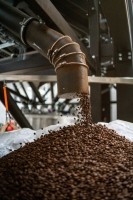
In Australia for example, instant coffee products are even trending towards premiumisation, where a few years back instant coffee was often considered the more economical and affordable option.
“We are seeing more and more premium instant coffee priced at AUD1.50 (USD1) to AUD2 (USD1.33) per sachet. If consumers can get a decent coffee out of that, they are happy with it,” said Shane Harold, National Business Manager at Aussie firm Black Bag Roasters.
“In several APAC markets we are also seeing a rise in demand for smaller-sized packs as well as a preference for coffee made with milk alternatives and that contain less sugar.”
The firm’s Director of Sales Lance Brown added that sustainability is also emerging to become more and more important in the coffee business, driving them to add QR codes to their packaging in an effort to relate to millennials and environmentally conscious consumers.
“Nowadays, consumers are thinking about where a product comes from, whether their purchase supports farmers, etc. [so] telling the story [on the packaging] will make a difference when they browse through the supermarket aisle,” he said.
“Consumers are looking at new means to get their coffee fix in the morning. Brands will stand to miss out on this sales revenue, if they do not move along with changing market trends and consumer behaviours.
Wake The Crew added that the rise of sustainability awareness could well also be at odds with the growth of RTD moving forward, as the latter is equivalent to the use of more beverage containers.
“With more and more consumers becoming more eco-conscious, RTD format beverages might be something that many would slowly move away from,” Ong said.
“Making their own coffee at home in their favourite tumbler means generating less waste and being more eco-friendly - so RTD might not be necessary [in the long run].”
